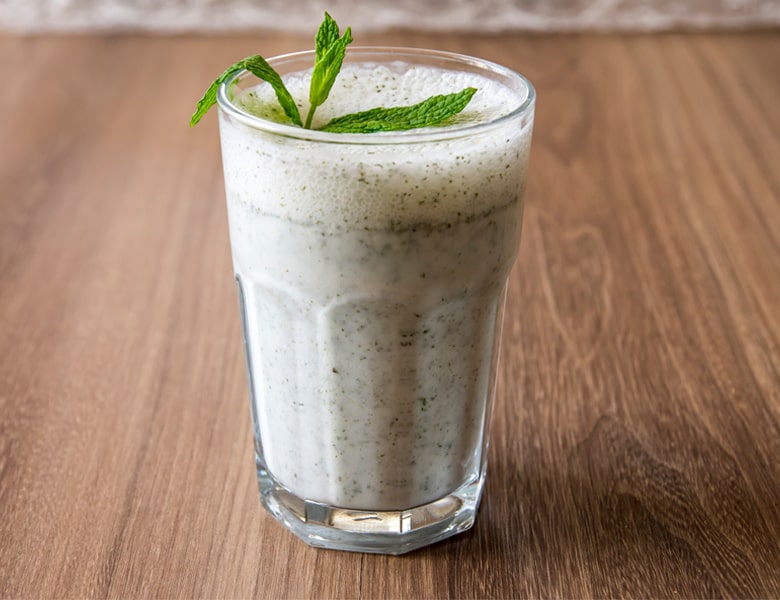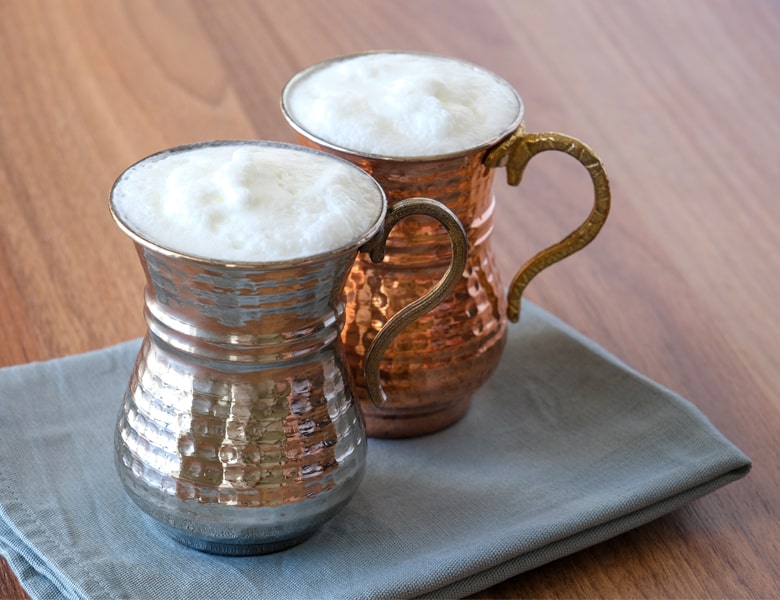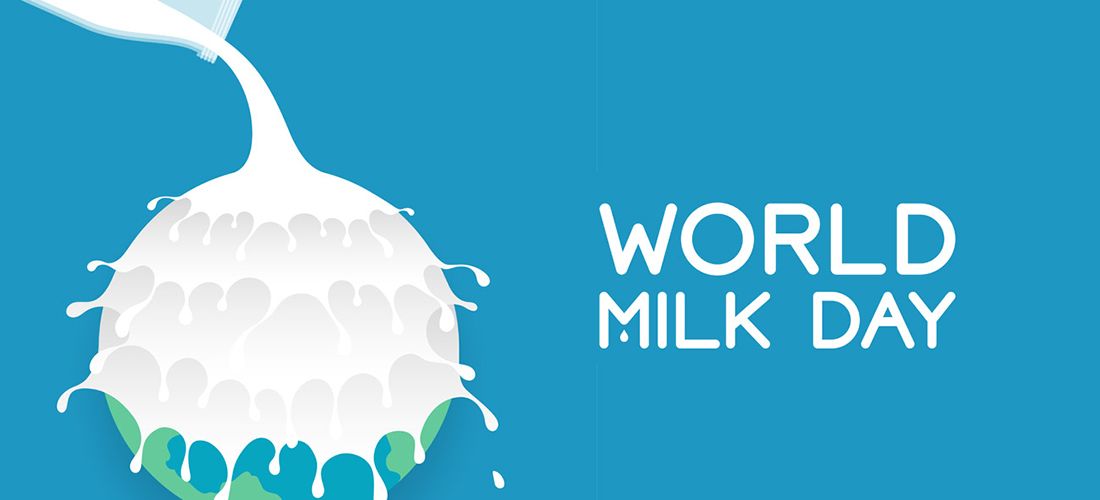Everything you should know about Ayran

- | آتاماد |
- Viewer: 524
Yogurt and fermented dairy products are produced in most countries of the world. These products can be classified based on microbial content and texture characteristics. Drinkable fermented dairy products are divided into three categories based on textural characteristics: Viscose products, Diluted or beverage products, and Carbonated products. Fermented milk products are common in Asian and Middle Eastern and Arab countries with different names such as lassi, doogh, mast, Ayran, and in Scandinavian countries with the names of acidophilus milk, viili, tafil, and filmgolk.
Ayran is the most popular dairy drink in Turkey and it is placed in the category of drinkable or diluted products. It is claimed that Ayran was discovered by the Gokturks during the war, after diluting yogurt to reduce its sour taste. Then it was brought from Central Asia to Anatolia, the Balkans, and the Middle East. Of course, in terms of production technique and taste, Ayran is different from the products of other countries.
According to the Turkish Food Codex, Ayran is defined as a drinkable fermented product that is prepared by adding water to yogurt or adding yogurt culture to standard milk. Codex has also specified the microbial composition of this product.
:Ayran production technology
In general, Ayran is produced in Turkey in two ways: Homemade and Industrial.
Ayran is produced in two ways at home. In the first method, first, add water (in the amount of 50%) to the yogurt and then add salt (in the amount of 0.5-1.0%) and mix until a drinkable and uniform product is obtained. Takes. In the second method, buttermilk is a side product that is obtained from yogurt during the production of traditional butter. In this way, the yogurt is diluted with water and enters the butter churning stage to produce butter after that, the butter is separated and the remaining part is called buttermilk, and at the end salt (0.5-1.0%) is added to it and combined. Ayran, like yogurt, can be produced from cow's milk, sheep's milk, and goat's milk, but cow's milk is mostly used.
Industrial Ayran is obtained both by adding water to yogurt and by adding starter culture to milk that has been standardized with diluted water and its fat and dry matter content. In both methods, the water must be free of any contamination. Pre-processing of raw milk (such as clarification and deodorization) and main processing (such as standardization of fatty and fat-free dry matter, homogenization, thermal process, incubation, etc.) are very similar in both production methods. Both methods do not have a significant difference in the main composition of the final product. Even during storage at 5°C, no significant difference was observed in the final product in terms of the amount of lactic acid, pH, and viscosity of the separated whey and sensory characteristics. Although the amount of acetaldehyde produced with diluted yogurt is less than that of Ayran produced with diluted milk

Ayran Production by adding water to yogurt
1-Receiving milk
2- Pre-processing (clarification and deodorization)
3- Milk fat standardization (1.5% high fat, 0.8% low fat, 0.15% low fat)
4. Add water (until 8% solids are reached)
5- Homogenization (100-150 bar, 65-70°C)
6- Pasteurization (90-95°C, 5-10 minutes)
7. Cooling (42°C)
8- Inoculation with Denisko Ayran starter culture
9- Incubation(up to pH 4.5-4.45)
10- Adding salt (0.5%) and mix
11- Cooling (22-25°C)
12- Filling in cups and storage at a temperature lower than 4°C
Ayran Production by diluting milk
1- Receiving milk
2- Pre-processing (clarification and deodorization)
3- Milk fat standardization (1.5% high fat - 0.8% low fat - 0.15% low fat)
4- Add water (until 8% solid material is reached)
5- Homogenization (200-250 bar and 55-60°C)
6- Pasteurization (85-95°C, 5-20 min)
7- Inoculation with Danisco yogurt starter culture
8- Incubation (up to pH 4.2-4.4)
9- Cooling (20°C)
10- Adding salt (0.5%) and mix
11- Filling in cups and storage at a temperature lower than 4°C

A number of defects may occur during product storage and affect its quality. The most common ones are serum separation or syneresis, low viscosity, and post-acid problems. Separation of serum occurs spontaneously in acidic gel and the reason for that is the colloidal degradation as a result of the sedimentation of proteins due to their higher density, and their transfer to the serum phase.
Several factors that play a role in serum separation include: solid dry matter, protein and fat content, thermal process, homogenization, and acidity.
The composition and quality of raw milk have a direct effect on the quality of Ayran. A high content of solid dry matter and more importantly a high content of milk protein is necessary for better strength of the product. In addition, the ratio of milk proteins (serum/casein proteins) plays an important role in preventing serum separation. For this reason, the Turkish Food Codex emphasizes that the protein content should not be lower than 2.8%.
In addition to increasing the water content, increasing the salt content can lead to a decrease in the viscosity of the Ayran.
Compared to similar European products, Ayran has a lower viscosity and higher acidity, and for this reason, Ayran has less mouthfeel. Tissue defects in Ayran are low viscosity and serum separation. To overcome these issues and create a pleasant mouthfeel, various methods are used. The use of different stabilizers such as CMC, LBG, pectin, gelatin, and carrageenan is the most common one, which can be used alone or in a combination of two or more stabilizers

Homogenization is another main factor in the strength of Ayran, which leads to the improvement of mouthfeel and prevents the formation of cream on top of the product. The homogenization pressure and temperature must be selected correctly. Increasing homogenization pressure reduces serum separation and increases viscosity.
The temperature and time of the thermal process of milk are other effective factors in the stability of Ayran. It has been reported that the temperature of 95°C for 5 minutes has the greatest effect on creating high viscosity among other thermal processes.
An alternative method to improve the stability of Ayran is to use enzymes. In this method, the goal is to increase the water-holding capacity by an enzyme. Transglutaminase seems suitable for this purpose.
Ayran is a fresh product with a short shelf life (10-15 days). According to the Turkish Food Codex, Ayran must contain more than 10-7 CFU of yogurt bacteria per milliliter. The processes carried out during production may reduce this number. When allowed heat treatment such as pasteurization and UHT is done along with aseptic packaging, it may be effective in prolonging the shelf life of the final product.
Recently, to increase Ayran's competition against non-alcoholic beverages in the market, carbonated Ayran has also been produced on an industrial scale.
All in all, optimizing the production parameters such as the selection of starter cultures, and pH control at the end of incubation seems necessary for better product stability. Thermal process and high homogenization pressure are useful for creating high viscosity and preventing serum separation. Improving the quality of hygiene and aseptic packaging are two important factors in increasing the shelf life of the product.
Reference:
Yildiz, Fatih. (2016). Development and manufacture of yogurt and other functional dairy products. CRC Press, 2016.
GET IN TOUCH
Copyright © 2023 Atamad.com All right reserved
Website design and SEO services by Seohama team – Web hosting by Sarverhama
Copyright © 2023 Atamad.com All right reserved
Website design and SEO services by Seohama team – Web hosting by Sarverhama









